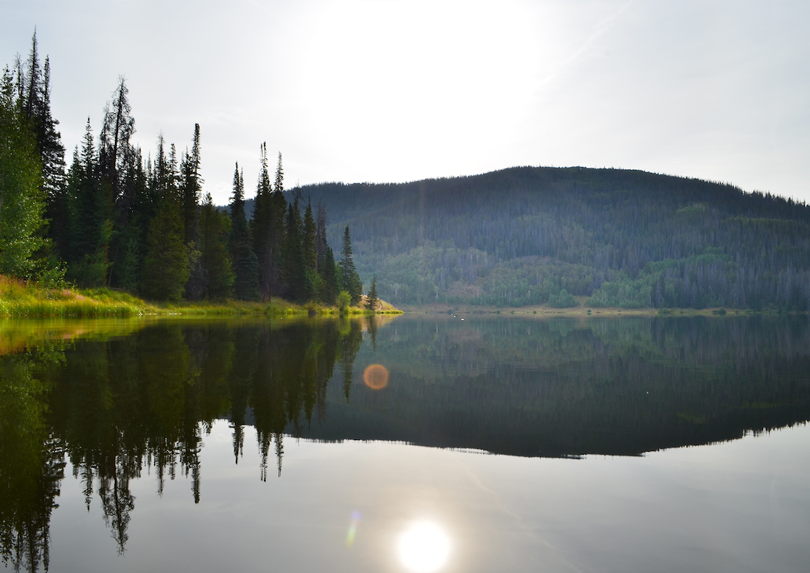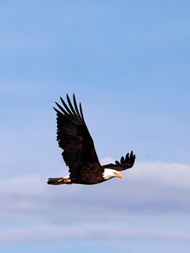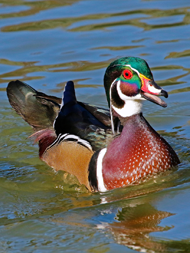
What Is It?
Streams, rivers and natural lakes all fall into the aquatic habitat type. Their specific characteristics often vary based on location, creating various habitat communities within Colorado.
What Are Some Examples?
 Lakes - Lakes support 25 Colorado species of greatest conservation need. This habitat type includes only natural lakes, the majority of which occur in the subalpine and montane zones. Very few lower-elevation natural lakes exist within Colorado; most of these are oxbow lakes, former river channels that became isolated, and are quite small.
Lakes - Lakes support 25 Colorado species of greatest conservation need. This habitat type includes only natural lakes, the majority of which occur in the subalpine and montane zones. Very few lower-elevation natural lakes exist within Colorado; most of these are oxbow lakes, former river channels that became isolated, and are quite small.
Mountain Streams - Mountain streams support 30 species of greatest conservation need. Mountain stream habitat includes high elevation streams on both sides of the Continental Divide. These streams are characterized by high gradient, cold temperatures, and a snowmelt-dominated hydrograph.
Eastern Plains Rivers - Eastern Plains rivers support 33 species of greatest conservation need. This habitat includes the main stems of the South Platte and Arkansas Rivers, and the lower portions of major tributaries such as the Cache la Poudre River and St. Vrain Creek. These larger-order rivers contain habitat features generally not found in smaller plains streams, including occasional deep pools, secondary channels and backwaters, and inundated floodplain areas during high water.
Western Large Rivers - Rivers like the Colorado, White, and Yampa support 31 species of greatest conservation need. These large, complex, and highly managed river systems are home to some of the most critical species like the federally-listed
Colorado pikeminnow,
razorback sucker,
humpback chub and
bonytail. Highly variable flows and temperatures provide both benefits and challenges for the aquatic species they support.
Learn more about these and other aquatic habitats in
chapter 3 of the State Wildlife Action Plan (SWAP).
What Species Depend On This Habitat?
All of Colorado’s fish species, like mountain sucker and
cutthroat trout, rely on aquatic habitats, but these ecosystems support various other species as well.
Leopard frogs and white pelican reside in these landscapes, as do
river otters. Little brown
bats, white-faced ibises, and
bald eagles also rely on aquatic ecosystems.
What Challenges Does This Landscape Face, and What Is CPW Doing?
 Urban development lends itself to consumptive water use and dams, which can pose problems for aquatic ecosystems. CPW carefully allots water rights and engages in rigorous habitat restoration in order to keep negative effects at a minimum.
Urban development lends itself to consumptive water use and dams, which can pose problems for aquatic ecosystems. CPW carefully allots water rights and engages in rigorous habitat restoration in order to keep negative effects at a minimum.
CPW, in conjunction with other
Department of Natural Resources agencies, participates with the
U.S. Fish & Wildlife Service in an expansive recovery program involving neighboring states, water interests, conservation groups, and land management agencies. These entities work to help restore and reconnect riverine habitat, develop wise water management strategies, and engage the public in order to preserve the native fish communities.
Aquatic nuisance species (ANS) are another large threat to aquatic habitats. CPW’s invasive species program spearheads multiple initiatives to raise awareness of these nonnative species and stop their spread. This requires your help. Please
clean, drain and dry your watercraft, comply with
boat inspection laws, and follow our
helpful tips for preventing ANS from damaging our waters!

